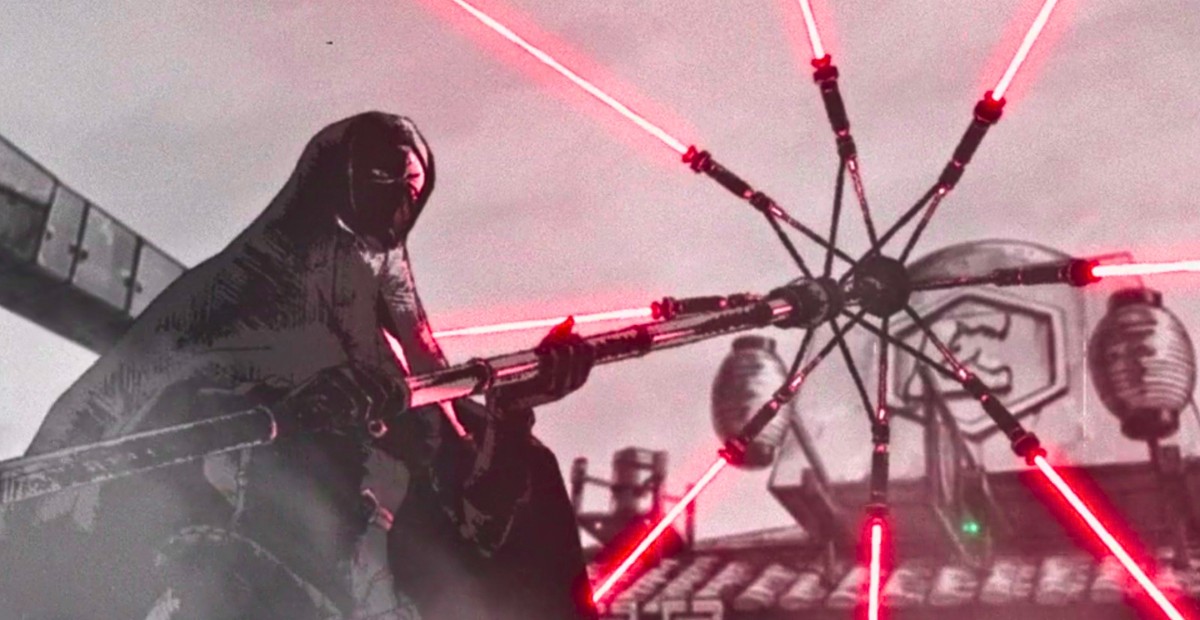When I first saw The Duel from Star Wars: Visions, I couldn’t stop thinking about that spinning lightsaber umbrella. It looked absolutely wild. But the cool part is—it’s not just there to look flashy. The novel Ronin by Emma Candon actually explains how this thing works, and it’s way more clever than I expected.
It’s All About Sith Auxiliaries
In this alternate Star Wars universe, the Sith use special components called lightsaber auxiliaries. These are devices you can attach to a regular lightsaber to completely change how it behaves. The umbrella you see in The Duel is actually a type of auxiliary called the parasol auxiliary.
What’s even cooler is that the Sith bandit Kouru didn’t build a lightsaber with seven blades or seven kyber crystals. I used to think that at first. But what’s really happening is that her single lightsaber slots into the parasol auxiliary, and the device splits the blade’s energy into seven parts. You can even see her pull the saber out of the device in the short.
Now when Kouru spins her umbrella, those seven blades aren’t just for show. The parasol auxiliary channels the lightsaber’s energy outward, shapes it into multiple blades, and lets her rotate them fast enough to create a kind of spinning shield. The red canopy effect you see when it spins? That’s all the energy of her one saber, cleverly redirected. She’s not using extra kyber crystals or extra blades—just a smart piece of tech that gives her a huge tactical edge.
The Ronin’s Blueprints Changed Everything
Here’s where it gets even more interesting. These auxiliaries weren’t some ancient Sith tradition. They were actually designed by the Ronin himself, back when he was still the Dark Lord of the Sith leading a rebellion. His blueprints were shared from one Sith cell to another, letting others build crazy modifications like the umbrella.
Kouru used one of these blueprints to build her parasol auxiliary after she finished her lightsaber. And the Ronin didn’t stop there—he also had a scabbard auxiliary that let him draw his saber from a sheath like a regular sword. One Sith master even used a fan auxiliary that worked like a folding fan. There were probably more designs out there too.
Not Everyone Liked These Tricks
Of course, the Jedi looked down on these auxiliaries. They thought it was dishonorable to fight with modified sabers like this. But even one Jedi lord – Hanrai – admitted that the devices were brilliant, and he collected them just for their craftsmanship. He didn’t use them, though—he just appreciated how well they were made.
Personally, I think that says a lot about how creative the Sith could be when they weren’t following the rules. They weren’t afraid to experiment and find new ways to fight.
Why I Love This Idea
For me, the whole concept of lightsaber auxiliaries is one of the most creative things to come out of Visions and Ronin. It shows how the Sith thought outside the box and turned even the iconic lightsaber into something flexible and unpredictable.
Now whenever I rewatch The Duel, knowing how that umbrella works makes it even more fun to watch. I kind of wish we saw more of these wild designs in the movies or shows. They really add a new layer to lightsaber combat that I’d love to explore more.

